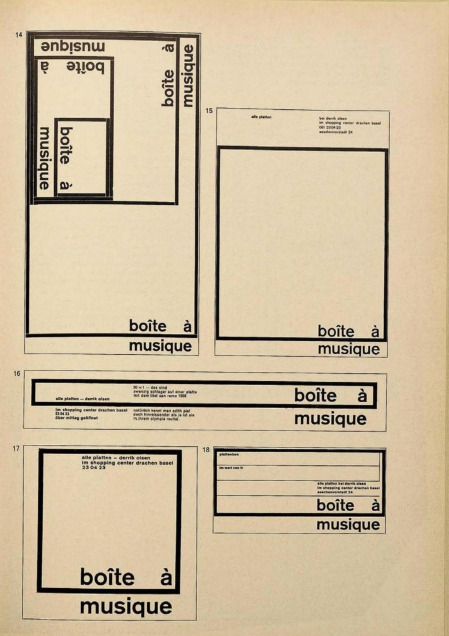#Gerstner Programm
Explore tagged Tumblr posts
Text

Sample House
#Sample House#Material Librarian#interior#design#New York City#design practice#designers#architects#contractors#material#library#white#typography#type#typeface#font#Gerstner Programm#Quadrant Text Mono#2024#Week 30#website#web design#inspire#inspiration#happywebdesign
9 notes
·
View notes
Text
Today, I decided to get a few things together, and tested out working with my tablet* by picking up a copy of Grünberger’s “Analog Algorithm” we have lying around in Mannheim and, well, working with it (you can see the work in progress on my Instagram here: https://www.instagram.com/p/C8KhRwxCn0J/
After a few issues with storing and naming the files I worked with (and I am still pretty sure that I didn’t get the permutations right), I posted the screenshots to my Instagram account, while remembering that this was not the first time I worked with this particular book.
Switching back to my laptop, I looked for the files from last time, and especially from when they they were.
Boy, was I surprised to see their date: 22nd of June, 2022. Two years ago, bachelor’s thesis between those files and now, if I may. I am consistent in my summer endeavours.
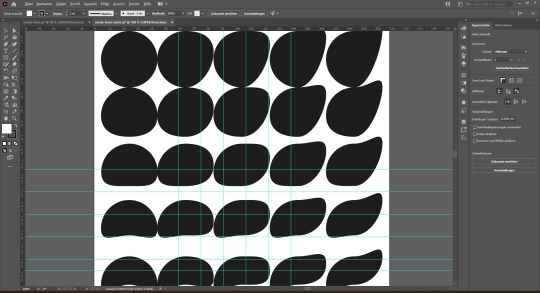
And I had this smile on my face. How awesome is that? You just continue from where you left off. No deletion, no destruction, just a continuation of your own process, at your own pace.
As part of my explorative investigations into design as program(me), I’m also investing time into Karl Gerstner’s “Designing Programmes”, as well as an aside and, for later, Christian Büning’s “Zirkeltraining für die Augen”, a book which will hopefully allow me to improve my visual design acuity at first glance, which I value as very important for an art director.
Link list of the books mentioned:
Get “Analog Algorithm” from slanted, Lars Müller Publishing, or from Amazon Read more about Analog Algorithm on its dedicated website, https://analog-algorithm.com/
Get the “Designing Programmes” 1967 edition from archive.org, Amazon, and from Lars Müller Publishing There is also a new reprint of this book, which you can find here, https://haraldgeisler.com/books/ in English, German, and French, bien sûr!
Get “Zirkeltraining für die Augen” from Werkstoff Verlag, or from Amazon.
Link list of the people mentioned
Christoph Grünberger’s Linktree
Karl Gerstner’s estate Website
Christian Büning’s studio Website
*Adobe Illustrator is sluggish on my tablet, while making me angry with how file storage works for these poor ports of the excellent desktop app
#analog algorithm#graphic design#parametric design#programmatic design#christoph grünberger#karl gerstner#christian büning#code & canvas#after-hours blogging#after-hours#graphic design books#adobe illustrator
3 notes
·
View notes
Text
Guitar Summit 2023 in Mannheim

GUITAR SUMMIT 2023: Das Line-Up für die ultimative Gitarrenparty steht! Im Jahr 2017 hatte ein kleines, aber umso enthusiastischeres Team aus der Redaktion des Gitarre-&-Bass-Magazins die Idee, ein Event auf die Beine zu stellen, das sich ganz den Themen Gitarren, Bässe, Verstärker und allem, was dazu gehört, widmet − ein Festival mit einem umfangreichen WORKSHOP-Programm und mitreißenden Live-Konzerten mit internationalen Top-Artists, umgeben von einer großen AUSSTELLUNG mit allen angesagten Marken aus der Gitarren- und Basswelt, die für eine nie dagewesene Vielfalt und einen umfassenden Marktüberblick sorgen. Der GUITAR SUMMIT war geboren und ist heute eine der weltweit größten Veranstaltungen seiner Art! In diesem Jahr trifft sich die internationale Gitarren-Community vom 22. bis 24. September zum fünften Mal im Mannheimer Rosengarten, um beim GUITAR SUMMIT ihre Lieblingsinstrumente zu feiern! Über 550 Aussteller präsentieren Klassiker und Neuheiten auf den vier Etagen des Rosengartens − hier gibt es alles, was das Gitarristen- und Bassistenherz höherschlagen lässt − von spektakulären Kreationen kleiner, renommierter Customshops über Innovationen feiner Manufakturen bis hin zu Klassikern und Neuheiten großer, legendärer Hersteller. Ein besonderes Highlight ist die Tube & Bass-Ampfinity, in der zahlreiche Gitarren- bzw. Bassverstärker- und Boxenkombinationen nach Lust und Laune kombiniert und ausprobiert werden können. Auf 7 Bühnen bieten über 100 Workshops und Showcases praktische Tipps zu Spieltechniken aller Stilrichtungen, wertvolle Ratschläge zu Songwriting, Recording, Instrumentenbau und Technik sowie spannende Einblicke ins Musikbusiness. Namhafte Musiker wie Bill Kelliher (Mastodon), Mateus Asato (u.a. Bruno Mars), Doug Aldrich (u.a. Whitesnake), Doug Wimbish, Yvette Young, Lari Basilio oder Markus Grosskopf und Sascha Gerstner (Helloween) werden auf den Workshop-Bühnen stehen. Das Line-Up der Konzerte am Freitag- und Samstagabend liest sich wie das Who is Who der aktuellen Gitarrenszene und ist gespickt mit Highlights wie der Gitarrenlegende Al Di Meola, der Bluesrock-Senkrechtstarterin Laura Cox, Saitenzauberer Greg Koch mit seinem Koch Marshall Trio, Fingerstyle-Wunder Alexandr Misko oder dem Joscho Stephan Trio, das auf den Spuren des legendären Django Reinhardt wandelt. Darüber hinaus wird die Martin Miller Session Band mit prominenten Überraschungsgästen das Publikum auf eine musikalische Zeitreise durch die 70er, 80er und 90er Jahre mitnehmen. Am Sonntag kann die ganze Familie bei einem abwechslungsreichen Programm auf musikalische Entdeckungsreise gehen und unter anderem zu den Klängen der Dino-Rocker von Heavysaurus den Mozartsaal im Rosengarten rocken oder dem Singer-Songwriter Gregor Meyle lauschen. Eine große Dino-Rallye, Play-Circles zum Kennenlernen von Musikinstrumenten und Kinderschminken bilden das Rahmenprogramm des Familienspecials! Für Schnäppchenjäger, Vintage-Freunde und Sammler gibt es am Samstag außerdem den Guitar Summit Flohmarkt im Quartier Q6 Q7, der Gelegenheit bietet, besondere Schätze oder Schnäppchen zu finden. So wird der 22. bis 24. September 2023 zu einem erlebnisreichen Wochenende für alle Gitarristen, Bassisten, Musikliebhaber und die ganze Familie. Tickets und weitere Infos über den Guitar Summit gibt es hier: www.guitarsummit.com Quelle: networking Media Lesen Sie den ganzen Artikel
0 notes
Text
Graphics programmer here! I don't work on AAA games but I can provide some comments. Broadly you're right though, expect diminishing returns and shift of emphasis.
There's a million different factors in what makes games 'look good'. For decades, some notion of "photorealism" trumped everything, although exactly what that meant has shifted considerably (currently 'looking like a modern digitally-shot film'). Nowadays I think we're finally letting go of that - in part because of the diminishing returns discussed above - and experimenting with more creative, nonphotorealistic art direction.
Besides simply computers getting faster, in the past couple of decades two really huge things happened in graphics: the introduction of programmable shaders, and physics-based rendering theory. Both of these drastically changed how graphics were done and opened the door to all sorts of inventive new techniques.
I don't think it's likely that we'll see that sort of massive paradigm shift again anytime soon. Newer developments in graphics tend to be a lot narrower in scope. (Yes, even raytracing).
So "graphics" does not progress evenly. We've gotten very very very good at surface shading, and we've built a standardised workflow around PBR that means we can pretty reliably get the computer to simulate what happens when light strikes most types of object. We've also standardised on a lot of sensible ways of doing things - e.g. doing light calculations in HDR floating point and tonemapping which gives it a sort of 'filmic' look (because modern films are also shot in HDR and colour graded in much the same way lmao). These two things are basically solved problems. We are unlikely to render a better-looking brick.
There's a lot of other stuff, though, that is still way too expensive to simulate accurately in realtime - so realtime graphics is still an incredibly complex game of smoke and mirrors.
For example, take water. (I'll be writing a massive article on water rendering soon). If you want to simulate a choppy ocean, there's no computer on Earth that could do an actual fluid sim in real time. But you can make your GPU add up a bunch of Gerstner waves in the vertex shader or even do a fast fourier transform of some real ocean spectra, and instance some particles at the wavecrests to simulate foam, and whack some Fresnel on the speculars, sample the colour buffer using displaced coordinates to approximate refraction, and a handful of other tricks, and you'll get a pretty tasty ocean.
youtube
The stuff that's really hard to do is stuff that involves light bouncing around the scene in multiple ways before it reaches your eyes. Speculars, diffuse interreflection, subsurface scattering, all of that. Rendering a leaf with the sun on the other side is a much harder problem than rendering that brick.
The hot new feature of the latest hardware is raytracing. That will help with all of those things, potentially! But the thing is... we've spent the last decade finding ways to fake it.
Take reflections. If you want to do realtime specular reflections, your options are:
only reflecting the lights: most materials do it this way, but if something is quite shiny, you've got something missing
an environment map: essentially you render the scene onto the surface of a sphere around a point. good if the object is very small compared to the scene, the reflections are blurry, and the object is bumpy. if you just want to make something 'look shiny', this is a good option. can baked in advance (but you won't reflect non-static objects) or updated with a special render pass (expensive, so you try not to do this every frame).
a reflection camera: good for planar reflections like mirrors. you basically render the scene twice, once reflected through the mirror. can also be used with a normal map to get slightly distorted reflections, up to a point. (expensive - you have to render the scene twice, lots of texture reads without mips)
screen space reflections: you raymarch into the depth buffer and then sample the colour buffer. you won't reflect anything that's not onscreen, which can be jarring, but you can do this all in the fragment shader. (expensive - gives your GPU's ALU a workout, lots of texture reads without mips. works well with deferred rendering.)
raytracing: the new revolution that's going to change everything forever! ...assuming the players are really paying close attention to shiny things to notice the difference, anyway. (noisy, mega expensive, requires the player to have a card that supports it)
Besides raytracing, all these techniques are pretty old. Which ones should you use for your game? It depends on so much shit: art direction, target hardware, what else you're spending your render budget on. If reflections are important, you can probably use one of the first three for most situations. But if you can use raytracing, it will probably look nicer. More accurate reflections, more objects reflecting the whole scene.
How much does this affect someone's enjoyment of the game? If they're a graphics nerd, they might be pretty excited. If not... maybe they'll get a general feeling that things look 'more realistic', but you can already get so far with rasterisation, baked lightmaps and screen space techniques that it's not the same sort of dramatic leap that previous generational changes have represented. The difference is actually most obvious in lower-detail scenes with a lot of smooth surfaces, which is the opposite of most games lol.
So on the pure rendering front we're definitely hitting hard diminishing returns.
There are other fronts of advancement, but it's increasingly subtle details. e.g. real time cloth sim has improved drastically in the last few years.
And there's a lot of stuff that while it ought to be simple, still confounds modern games. Although it's become increasingly popular to record huge amounts of mocap data, animation systems have sooo much room to improve. It's really hard to get two characters to interact according to a prerecorded animation in a natural-looking way - either you have to jump a character into place or accept there may be janky misalignments. So e.g. in Warframe, a game that's got all sorts of crazy advanced graphical techniques... if I try and get my character to pet her cat, she will most likely wave her hand somewhere in midair half a metre from the cat. Animations like kisses where two characters squish together and physically interact are especially hard to do well (there's a reason people went nuts about that TLOU2 trailer a couple years back).
There's also a lot of technical puzzles to do with interacting with terrain (foot IK, flattening against walls, squeezing through gaps) and animation blending (with the new hotness being 'inertial blending'). The future will probably involve more sophisticated systems for blending procedural animation (IK, physics sim etc.) with authored animations, but that's a tricky technical problem to solve and cover every single weird edge case. It's been a persistent problem that game characters tend to have much nicer shading models than animation systems, so they look great in a screenshot but move really unnaturally, or can't act expressively, all of that.
Even something that seems as simple as a character picking up an item in their hand is something that is really hard to get right! Most games simply sidestep the problem and teleport the item from the world space to the character's hand/holster/etc. Or if the player can manipulate the world with physics, they hold it with an invisible ray.
How much difference will that make? I don't know. It fascinates me, but I think players have learned not to care too much about a bit of animation jank.
Destruction is also really hard to do well. It's something we're seeing lots of exciting experiments around - take Teardown's incredibly clever voxel rendering, where a different abstraction (voxels rather than polygons) lets them do a bunch of really detailed physics and semi-raytraced reflections without specialist hardware. Boolean cuts are a mechanic explored in some games (quite far back). Or you pre-simulate the destruction, which has been done as far back as HL2E2. But inevitably you have to abstract over it somehow.
The other technical front is like... handling all the data involved in modern games. Both on the game logic side - making most efficient use of threads and CPU cache, 'data oriented' design - and the graphics side, swapping between LOD levels seamlessly - and also especially with loading stuff off the disc and figuring out what to drop from memory so you don't get janky pop-in. AAA games especially pull from a massive worldwide asset production line and nowadays, might weigh in at tens or even hundreds of gigabytes compressed on disc. Streaming all of that off the disc in an open world game is a really insane technical feat honestly - dealing with networking in the mix, customisable costumes etc., even more so. But we mostly recognise it when it goes wrong: animations don't load in when they should so a character T-poses, or the textures look really blurry for a bit.
And just because it's insane that this can be done at all doesn't mean it's necessarily always done well. Making modern AAA games is a ridiculous logistical operation as much as everything. Even with increased use of mocap, photoscanning, and the like, all that data has to be authored, cleaned up and incorporatedi nto the game. The quieter revolution has been the scaling up and Taylorising of videogame production, so you can get a few hundred people in twenty different ocuntries to make the armour plates for your robot dinosaur, or cosmetics for your loot shooter, or whatever. There's a lot of room for improvement on data compression as well, as Fitgirl constantly demonstrates lmao. A lot of games don't go for the level of efficiency we could achieve with modern hardware, just 'good enough'.
Anyway all that said...
Art direction is way way way more important than graphics tech, and rather than chasing diminishing returns of realism, the real leap forward will come when people start applying the tech to other purposes besides "realism".
Take Hades for example. Fantastic looking game - but it's not doing anything super fancy on the technical side, just drawing lots of sprites, some animated vfx sprites, and some low-detail models with a cel shading effect, I think there's a subtle bit of bloom over the top. What makes it look so good is the incredibly strong use of colour and the fantastic illustration style unifying it all. It's clearly a well-engineered engine that loads quickly and runs at a high-framerate, but it's ultimately just using existing tech to strong effect.
Or Disco Elysium - painted backgrounds which have depth, normals and occlusion information allowing real time lighting in a shader, low-detail 3D models with painted textures that unify them with the game's style. And again loads of static paintings and illustrations.
3D? How about Scorn? Made in Unreal, but it doesn't look like any other Unreal game you've played; it looks like a Giger painting, down to all sorts of subtles of how light works. It's full of gorgeously little gruesome animations of your character sticking their hand in squishy ports and things like that. And that effort paid off hugely. The devs of Scorn chose a few specific things to focuse their effort on, tech-wise - exactly the ones most necessarily for the vibe they were trying to set.
So I really hope that games will go the direction animated films are going lately, and start exploring the "nonphotorealistic" aesthetic space a lot more. I think we haven't even scratched the surface of what GPUs can do. I especially think most games on the platform I work on at the moment, the Quest 2 standalone VR headset, are not nearly making full use of the expressive power of this hardware. We don't have to make everything look like plastic.
it becomes a lot more understandable that people claim graphics haven't advanced noticeably since the 360/ps3 era when you remember everyone who says that and isn't just a liar is someone whose only current gaming outlet is phones and/or the Switch, both of which really can only handle 360/ps3 graphics.
432 notes
·
View notes
Text


just realized this is one of my fave fonts that was actually a flop when she came out and this is one of the few actual examples of her being used IRL when she came out...
73 notes
·
View notes
Photo

#869 doberman
6 notes
·
View notes
Photo

Designing Programmes by Karl Gerstner / Reprint design by Integral Lars Müller / Published by @larsmullerpublishers * * * * * #karl #gerstner #designing #programmes #type #typeface #typography #typographic #larsmullerpublishers #grid #layout #graphicdesign #design #graphicdesigner #designer #book #books #booksondesign #designbook #publishing #publication #designstudent #designstudio https://www.instagram.com/p/BqijIkhFm8A/?utm_source=ig_tumblr_share&igshid=9ho5urixw03w
#karl#gerstner#designing#programmes#type#typeface#typography#typographic#larsmullerpublishers#grid#layout#graphicdesign#design#graphicdesigner#designer#book#books#booksondesign#designbook#publishing#publication#designstudent#designstudio
1 note
·
View note
Text
My Kind of Genius • Jean Widmer


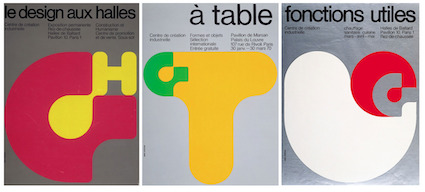
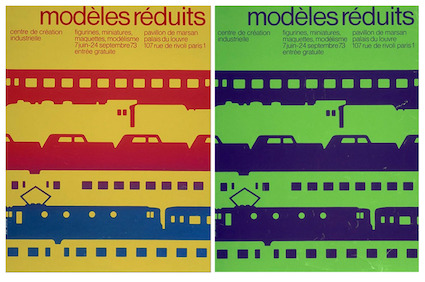
I’ve just received the big Beaubourg monograph on the design work of Jean Widmer. I’ve posted about him before, but it turns out that he is even more interesting than I realised and that I have been living in his world for most of my life.
Widmer was born in Switzerland and attended design school in Zurich. He worked with the Charles Loupot studio on the St Raphael branding in the early 1950s
https://paulrennie.rennart.co.uk/post/632126186081992704/things-i-like-st-raphael-advertising-charles
Widmer moved to Paris and worked for the big department stores and fashion magazines, and at the intersection of place-making and way-finding through design...In the 1970s and 1980s he applied this to the signage and identity for Beaubourg...a concept, building and experience that I consider to be a work of genius, and the most significant modern building of the 20C.
After Beaubourg, Widmer designed the graphic signage for Orsay and many other cultural institutions...and also for the French motorway network.
I love the way that throughout his career he was able to develop and apply systemic thinking to graphic identity so as to create place-making and way-finding that recast the pre-WW2 spectacular into something that was bigger, more coherent and more dynamic...The expansive nature of his systems of design allow for freedom within the machine system (matrix)...that’s beautiful, and just as it should be
https://paulrennie.rennart.co.uk/post/636215392633815040/things-i-like-pompidou-centre-piano-rogers
https://paulrennie.rennart.co.uk/post/615008865089617920/building-a-mind-palace-2020 (with links)
Widmer began with a brand, and grew the his system of design until in became an expression, through progressively larger and more coherent iterations of - shops, magazines, institutions, cities and, eventually, of national identity and of le monde francophone...speed and pleasure combined through the exquisite everyday, writ large. Supergraphics indeed.
Charles Loupot, Karl Gerstner, Wolfgang Weingart...and Jean Widmer
https://paulrennie.rennart.co.uk/post/166566777820/things-i-like-designing-programmes-karl
index graphik and supplied the images
2 notes
·
View notes
Photo

art direction, design: Sitoh inc. edit: Sayaka Ishii (BNN,Inc.) author: Karl Gerstner CL: BNN,Inc. “Designing Programmes”
5 notes
·
View notes
Text

Collect NEW YORK
#Collect NEW YORK#design#studio#independant#agency#portfolio#white#typography#type#typeface#font#Gerstner Programm#2024#Week 17#website#web design#inspire#inspiration#happywebdesign
8 notes
·
View notes
Photo
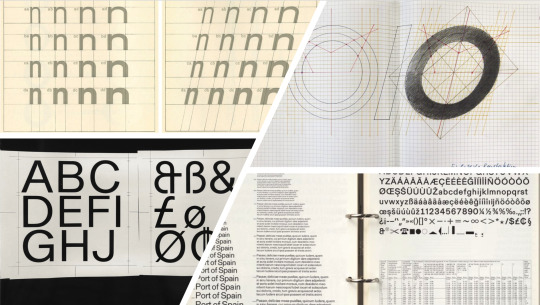
Gerstner Programm
forgotten-shapes.com. (n.d.). Forgotten Shapes. [online] Available at: https://forgotten-shapes.com/gerstner-programm?article=gerstner-programm [Accessed 6 Sep. 2020]
5 notes
·
View notes
Photo

SHIPPING WORLDWIDE Programme as Typeface, Typography, Picture, Method Karl Gerstner: Designing Programmes Available at www.draw-down.com Designing Programmes is one of his most important and influential works. It was first published in 1964, and reissued in a new design by Lars Müller Publishers in 2007; both editions are now rare (the first almost completely unavailable). Across four essays, Gerstner provides a basic introduction to his design methodology and suggests a model for design in the early days of the computer era. Gerstner's innovation was to propose a rule set or system defined by the designer that would determine all aesthetic decisions for a given product: for example, a logo might also function as a layout grid system or inspire a font. Today the book is especially topical in the context of current developments in computational design. With many examples from the worlds of graphic and product design, music, architecture, and art, Designing Programmes inspires the reader to seize on the material, develop it further, and integrate it into his or her own work. #Typeface #Typography #Picture #Method #KarlGerstner #DesigningProgrammes (at Switzerland) https://www.instagram.com/p/B-67nVPHnBJ/?igshid=1hvhfgn7lj0pl
16 notes
·
View notes
Text
KARL GERSTNER
I was instantly drawn to Gerstner’s work due to learning about his success in his painting and design pursuits, something I resonate with as an Illustrator and graphics student who looks to combine and use both skills within my work.
"I see graphic design as a matter of solving problems; art as a matter of inventing them."
Gerstner was an innovator, pioneer of design and a trailblazer. He was one of the first Graphic Designers to popularise right jagged text form and utilise the true power of typography in emoting and connecting the aesthetic of words with meaning. From starting up his own Graphic Design company in 1949, to designing the iconic Swiss Air logo, his work has made him one of Switzerland’s most successful Graphic Designers. His use of bold symmetry and complex grids sets his work apart and showcases his vast creativity, forward thinking approach and innovative designs. He was highly influenced by fellow Swiss designer Armin Hoffmann.

Geigy Magazine, Karl Gerstner 1970, the image on the right makes reference to yarn spindles and is an advert for Irgalan Dye, it cleverly suggests at the subject matter and the text is not overbearing or overly detailed.

Swiss Air logo design, Karl Gerstner 1978
Gerstner sought to find systematic approaches for his design solutions, he implemented and created programmes ahead of his time that helped him identify the correct variations and tools to use for his design process. He believed in the power of connecting illustration and word, his designs focussed on the ability to identify problems and communicate effectively the use of these elements as a solution.
“Instead of solutions for problems, programmes for solutions — There is always a group of solutions, one of which is the best under certain conditions.” (Gerstner 1968)

Capital Magazine, Karl Gerstner 1963
I for one would love to get my hands on a copy of his book ‘Review of 5 x 10 years of Graphic design etc.’ Where he explains his thoughts on good design, his choices on font and dives into his use of the grid system.
“Bad artists copy. Good artists steal.” (Gerstner, 2001 Review of 5x10 years of Graphic Design)
Gerstner’s work remains modern, bold and timeless. His use of large font and imagery creates memorable and classic designs that firmly place him as one of the great Swiss Designers.

References
Hollis, R. (2012). Eye Magazine | Review | The designer as programmer. [online] www.eyemagazine.com. Available at: http://www.eyemagazine.com/review/article/the-designer-as-programmer.
Kulba, B. (2017). Celebrating Karl Gerstner. [online] Medium. Available at: http://www.medium.com/@bryanarchy/celebrating-karl-gerstner-b0ffbcf65c96 [Accessed 7 Sep. 2020]
Sadha, A. (2013). Thinking Karl Gerstner. 07 02 1930 | THINKINGFORM. [online] Thinking Form. Available at: https://thinkingform.nyc/2013/07/02/thinking-karl-gerstner/#.
Sadha, A. (2011). Thinking Karl Gerstner. 07 02 1930 | THINKINGFORM. [online] Thinking Form. Available at: https://thinkingform.nyc/2013/07/02/thinking-karl-gerstner/#/2011/11/02/thinking-karl-gerstner-review-of-5-x-10-years-of-graphic-design-etc/ [Accessed 7 Sep. 2020].
5 notes
·
View notes
Photo

目次 ─本書の構成─ [同時収録] On Karl Gerstner’s Designing Programmes カール・ゲルストナーの『デザイニング・プログラム』について 解説:ラース・ミュラー プログラムの意味するもの 日本語版解説:永原康史 [本編] Designing Programmes デザイニング・プログラム プログラム的であるために イントロダクションのイントロダクション 序文:パウル・グレディンガー 問題の解決に代えて、解決のためのプログラムを イントロダクション─ 極東からのプログラム/遥か中世からのプログラム 形態学としてのプログラム/論理としてのプログラム プログラムからの解決策/再び:プログラムからの解決策 グリッドとしてのプログラム/再び:グリッドとしてのプログラム 写真としてのプログラム/再び:写真としてのプログラム 文学のためのプログラム/音楽としてのプログラム 書体としてのプログラム 「古いアクチデンツ・グロテスクを新しい基盤に」 タイポグラフィとしてのプログラム 「統合的タイポグラフィ」 描画としてのプログラム 「今の絵画を作るなら?」 メソッドとしてのプログラム 「構造と動き」
Amazon.co.jp - デザイニング・プログラム 著者:カール・ゲルストナー 監訳:永原康史 翻訳:ヤーン・フォルネル
1 note
·
View note
